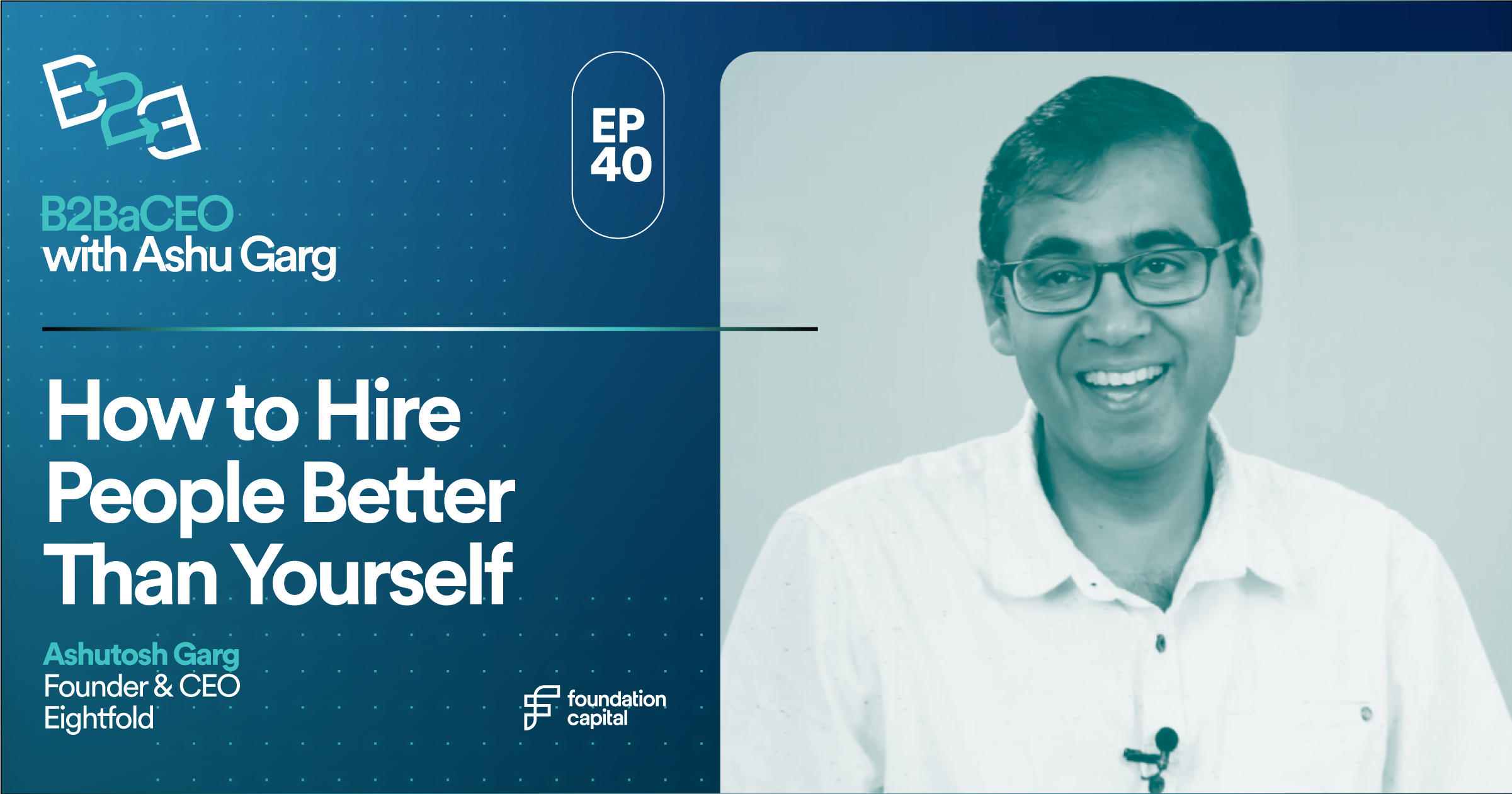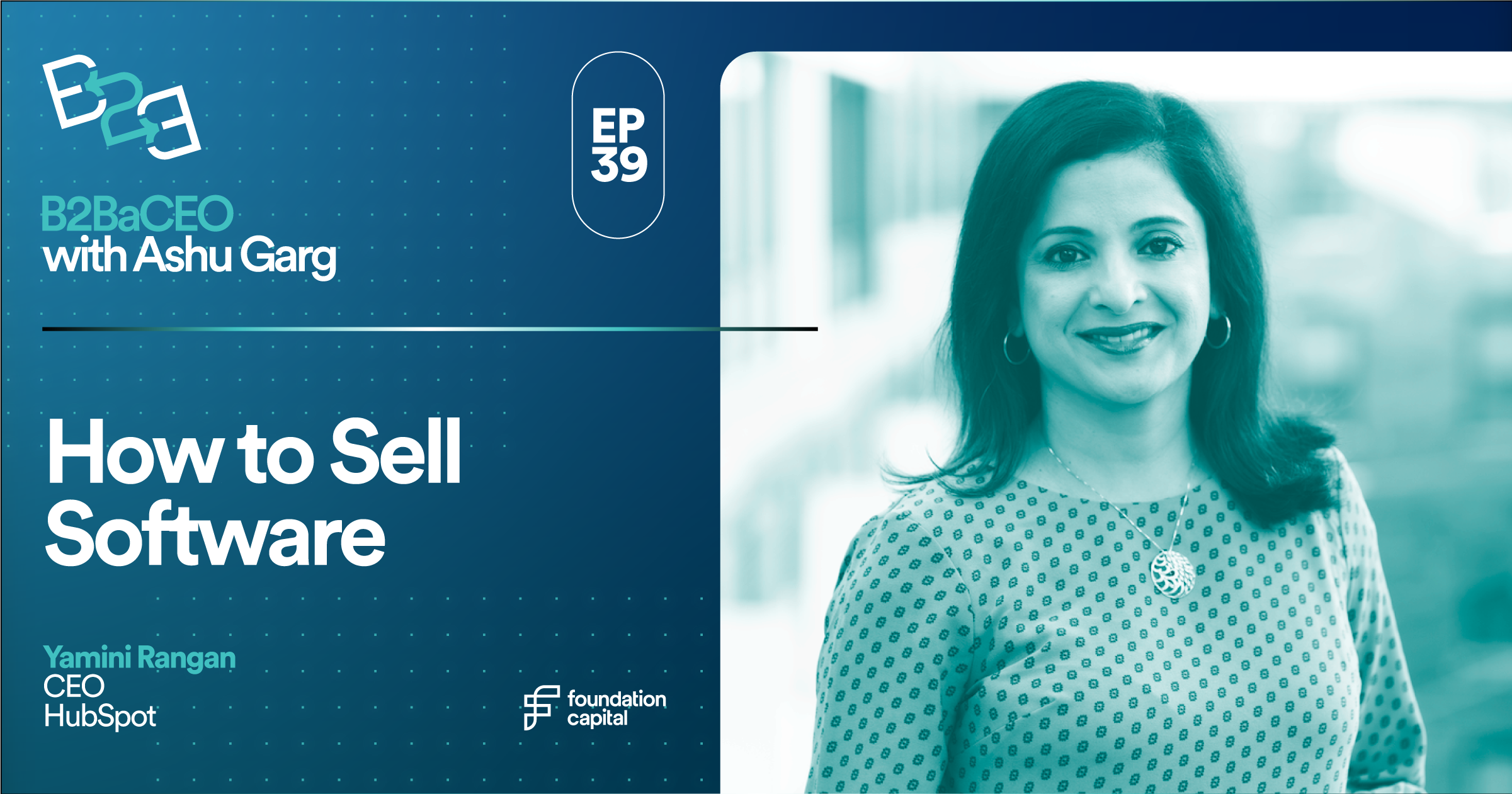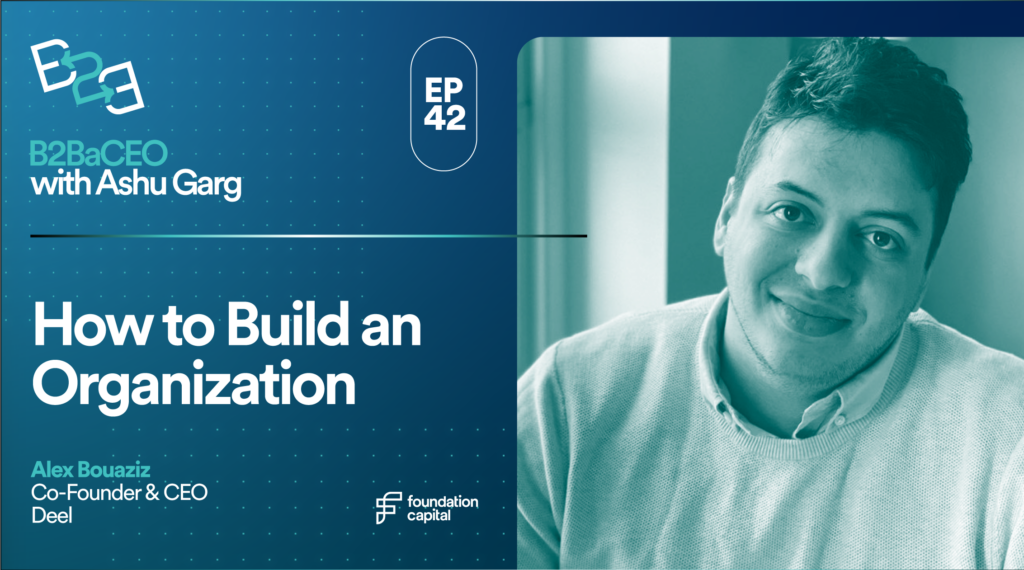Episode 41
How to Grow from Ph.D. to Two-Time Startup CEO
With Sanjit Biswas, Co-Founder and CEO of Samsara
05.03.2024 | By: Ashu Garg
Sanjit and I discuss his journey from grad student researcher to the founder of two major startup successes: Samsara, which recently hit $1B in ARR, and Meraki, acquired by Cisco for $1.2B.
I recently spoke with Sanjit Biswas, the co-founder and CEO of Samsara, a platform that helps companies digitize their physical operations. In 2023, Samsara reached $1 billion in ARR, making it one of the fastest startups in history to hit this milestone.
But this wasn’t Sanjit’s first major success. Before starting Samsara, Sanjit left his Ph.D at MIT to build Meraki, a cloud networking company that Cisco acquired for $1.2 billion in 2012.
In our conversation, Sanjit shares his journey from grad school research to bootstrapping Meraki in the early days. He reflects on the lessons he learned from Meraki’s pivot to the enterprise, the decision to sell to Cisco, and the insights that led him to start Samsara.
We then turn to how Samsara found product-market fit, Sanjit’s philosophy on allocating capital, and the areas where he believes generative AI will have the biggest impact.
Listen to our full conversation on Apple, Spotify, and YouTube, and read the highlights below!
Jump in and get your hands dirty, even if it’s uncomfortable at first
Many aspiring entrepreneurs get stuck in analysis paralysis, endlessly planning and strategizing without ever taking concrete steps forward. Sanjit encourages founders to not get overwhelmed by all the business advice floating around, and just learn by doing—even if it’s uncomfortable at first.
People get very intimidated by the entrepreneurial process. But if you return to your roots as an engineer and say, ‘Hey, I just like to build things,’ whether it’s products or companies, you can just give it a shot and experiment. The downside risk is not that big and the upside is pretty enormous because products are super scalable.
When Sanjit and his co-founder were still in grad school, they didn’t have a fully fleshed out business plan. But they started putting their research into practice, deploying WiFi networks across Cambridge. This on-the-ground experience gave them the insights to productize their technology and launch Meraki, a cloud networking company that was eventually acquired by Cisco for $1.2 billion.
To build the best products, create a tight feedback loop with your customers
As a technical founder, it’s easy to get caught up in the excitement of a fast-evolving technology. However, Sanjit stresses the importance of continuously engaging with customers to understand their needs.
This customer-centric mindset doesn’t always come naturally to engineers. Sanjit himself went through this transition—shifting his habits from coding late into the night to waking up early for customer meetings.
I was an engineer that would love to stay up late. You can just concentrate. I’d stay up until 2 AM building something, but then a lot of our meetings would be happening at 8 AM. So eventually you start burning the candle at both ends, you’re like, I have to pick one.
He found that as a technical founder, he had a unique advantage.
You can talk in a deep way about the product and you can get ideas about what to build next from talking to customers.
Over time, gathering customer insights became almost addictive, prompting a flywheel of rapid product iteration and improvement.
Use “allergy tests” to gauge demand before investing in new features
Most founders have lots of ideas. Most enterprises have an infinitely varied set of needs. Deciding which ones to prioritize is crucial, because the opportunity costs are so high.
To make better decisions, Sanjit and his team at Samsara developed a process they call “allergy tests.”
With allergy tests, the way we think about it is that the customers will just jump out of their seat when they see something that’s really compelling. They’ll say, “Yes! I could totally use that” or “Can I buy that now?” When you hear that, it’s a super strong signal that we should build it. And then we build it with the customer. … The allergy panel is the initial menu of what’s going to be interesting. But then we refine it based on the feedback loop.
By presenting mockups to customers and gauging their reactions, Samsara is able to prioritize features that solve their customers’ most pressing problems.
Most products in Samsara’s platform have been co-created this way. For example, after launching a GPS tracking solution for vehicles, allergy tests showed that customers also needed an integrated dash cam. In response, Samsara quickly spun up a new product line, which is now their highest selling license.
Treat failures as cheap experiments
Sanjit underscores the power law inherent in startup decision-making. A single major success can more than make up for dozens of small failures. The key is to view feature bets as cheap experiments and opportunities to learn.
The good news, stepping back in the same way as the venture business, there are power law outcomes when it comes to good decisions in startups.
Over the years, Samsara has made many feature bets that didn’t work out. Sanjit shares the example of how Samsara tried to apply computer vision to detect defects on manufacturing lines. It ended up being an extremely challenging problem due to the subtle differences between assembly lines and how frequently they change.
Instead of being swayed by sunk costs, they pivoted to a different use case: leveraging the same computer vision technology in their dash cams to detect risky driving behaviors. This bet turned out to be a massive success, and it’s become a cornerstone of their business.
Running AI models to assess driver risk and safety was technically very similar to what we were doing with machine vision on the factory floor. But it was much more repeatable because, it turns out, we all drive on the same roads! That’s the kind of thing where it’s like the mistake actually wasn’t that costly, and the upside was exponential.
To tackle sales as an engineer, transform it into a scientific process
Many technical founders find sales daunting, but Sanjit and his co-founder John dove straight in, picking up the phone and making calls themselves.
At some point, John wanted to figure out inside sales. He literally put on a suit. He was like a method actor. He put on a suit, came in, we both got call lists, and we picked up the phone and called.
This process helped establish empathy for the sales process and allowed them to build a playbook they could use as they scaled up and hired a larger team.
Again, Sanjit encourages founders to learn by doing. Even if a founder doesn’t have a sales background, they can use their technical skills to their advantage. Sanjit and his co-founder approached sales like engineers—developing a formula with measurable inputs (calls, demos, etc.) and outputs (revenue).
We said, well, if we make 70 calls, we get this many demos, which turns into this many appointments and trials, which then turns into this many transactions. We realized actually this is pretty simple. We just need to do it!
Apply an 70/20/10 framework to balance short-term needs with longer-term bets
As startups scale, it’s hard to balance short-term priorities with longer-term bets. Resource allocation becomes increasingly important.
This is again a kind of practical challenge that teams have, which is, “Hey, we have a lot of ideas we want to invest in. Should we put all [our resources] in the frontier stuff—the brand new exciting ideas—or the infinite list of feature improvements that customers want for the existing product?
Faced with these decisions, Sanjit uses a 70/20/10 framework to allocate resources effectively. 70% goes to core platform improvements, 20% to near-term feature enhancements, and 10% to riskier, “big bet” ideas. This division is not always perfect, but it’s an operating framework that ensures Samsara both captures value in the present and builds for the future.
The challenge is actually inertia, and this is true for any company that’s 1000s of people. You have people who have a full list of things to work on. So finding a way to carve out time and experiment and take risks—that’s why you have to have this framework.
Embrace emerging tech, but don’t build solutions in search of problems
Sanjit’s pragmatism and customer-centric philosophy also influences how Samsara thinks about emerging technologies like generative AI. Rather than getting caught up in the hype and building solutions in search of problems, Samsara starts with real customer challenges and works backward.
I think the danger with any hype cycle is feeling like you’ve got this hammer and you’re just going to go around looking for a nail. We’ve always tried to take the opposite approach: to look at what’s going on in the customer’s world and how might this be useful to them.
Summing up
Long-time followers of B2BaCEO may notice a pattern: previous guests like Ali Ghodsi, Robert Nishihara, and Naveen Rao have lived through similar journeys—starting as academics who go on to build companies that commercialize their research. Each combines the intellectual rigor of an academic, the scrappy execution of a founder, and the strategic thinking of a CEO.
Sanjit exemplifies this combination. His story provides valuable guidance for builders who also aspire to create innovative, industry-shaping businesses.
Published on 05.03.2024
Written By Ashu Garg


